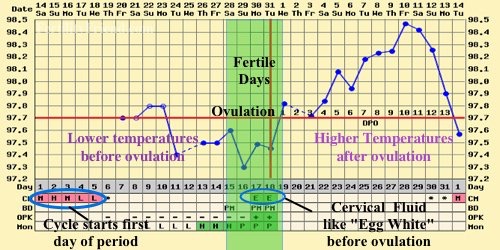🚨⚠️Attention all women ttc! Charting your basal body temperature is the best way to ttc and here’s why!
First off to chart your bbt correctly you will need a few things first.
1.) A basal thermometer, which is very inexpensive and you can them in stores and online. This is very important! A regular thermometer won’t cut it! Basal thermometers are accurate to 0.1 degrees Fahrenheit, where as a regular thermometer is only accurate to 0.2 degrees Fahrenheit. It makes a huge difference. Trust me!
2.) A fertility charting app, I recommend Fertility Friend. It’s very easy to use and is the best one in my opinion. It’s also FREE!
3.) An alarm clock, I’m sure you ladies have this one covered already!
4.) A night stand/bed-side table
And that’s all you need! Super easy right?!
Now here’s how it’s the best way to ttc and how to do it:
To chart your bbt correctly it is vital that you take your temperature at the same time each morning, hence the alarm clock. And yes you will have to wake up at the same time on the weekend too, BUT isn’t it worth it for a sweet, precious, little baby? ☺️ It is also important to take your temperature as soon as you wake up. This means without sitting up and making sure to move as little as possible, so be sure to have your basal thermometer within arms reach, like on your nightstand. After you take your temperature, use your fertility charting app to log your daily bbt. This is also an important step, because when you first wake up, you’re so out of it, and it’s easy to forget what your temperature was. However, many basal thermometers have memory recall, so keep that in mind if that’s something you’re interested in when you’re purchasing a basal thermometer.
I’m sure you’ve all heard of opks(ovulation predictor kits) a.k.a. ovulation tests/ovulation test strips. These are helpful when ttc as well, but charting your bbt is so much more helpful and informative. Charting your bbt will tell you the exact day you ovulate, and even if you actually do ovulate or not. Many women will get an lh surge(positive opk), and then won’t even ovulate, but just gear up to O and not follow through to release the egg. It’s also easy to miss your lh surge, especially if it’s short, and using opks can be extremely frustrating if you have a long lh surge as well. Your basal body temperature however pinpoints the exact day of Ovulation.
Your mensural cycle consists of three phases the follicular phase(the first day of your period to ovulation), ovulation(about mid cycle) and the luteal phase(begins after ovulation and ends on the day before your next period). The first day of your period(the first day of full on bleeding, not spotting) is what you would consider cd1(cycle day 1), and the next day is cd2, then cd3 and so forth until you start your period again then it’s back to cd1, so you start a new cycle every time you start your period. You will typically ovulate in the middle of your cycle, so around cd14, but everyone is different. Usually women have a 28-30 day cycle, but again everyone is different! Some women may have longer or shorter cycles, and that’s okay! Mine is 30-32 days long, and I ovulate between cd16 and cd19. Many factors can affect your cycle, such as stress, gaining weight, losing weight, exercise, illness, etc.
In the follicular phase, your bbt will be lower, averaging between 97.0 and 97.7 degrees Fahrenheit, but it’s okay if yours is lower or higher than average. Many people’s are. After ovulation, a thermal shift takes place and your bbt will remain higher throughout the luteal phase. If you do not see a thermal shift of one half to one degree Fahrenheit, then that’s how you know you haven’t ovulated yet. You need three days of high temperatures to confirm that ovulation has taken place, not one, not two, but three days of high temps to confirm O. After you ovulate, you enter the luteal phase a.k.a the ttw(two week wait). If you start your period, your bbt will drop down again. However, if you have conceived, your temperature will continue to stay elevated and may even rise higher. My bbt rose higher than normal before my period was even due, and I knew I was pregnant before I even took a test and got my bfp!
I know all this can get a little confusing, so here’s a chart from Fertility Friend that you may find helpful.

So you can see how bbt is lower at the beginning of your cycle or the follicular phase(period to ovulation), and bbt gets higher in the luteal phase(after ovulation to the day before your period) and drops down again when you start your period. You can also see the coverline(the horizontal line drawn in the middle of the chart). The coverline is established when ovulation is detected (after three days of high temps) It has no physiological significance what so ever. It’s only there as a visual tool to help you see your ovulation pattern.
Side note: I want to mention that after baby, charting bbt can also be very helpful when you’re not ttc. It could help to avoid any unwanted pregnancies, like a side effect free form of birth control, and it would be totally free! If it’s free, it’s for me! That’s my motto! 😉
It seems like a lot, but I promise you will get the hang of it! It’s actually super simple! I have learned so much about my cycle since charting my bbt, and I’m sure you will too! I really hope you all found this informative and helpful, and if you have any questions at all, please ask. I would love to help you in any way that I can. I wish you all the best of luck and send you all lots and lots of baby dust!
Let’s Glow
Glow is here for you on your path to pregnancy
Glow helps you navigate your fertility journey with smart tools, personalized insights, and guidance from medical experts who understand what matters most.
25+ million
Users
4.8 stars
200k+ app ratings
20+
Medical advisors



